Ready for a chemical peel, or is this your debut? Nice move! Peels can really rejuvenate sun-damaged skin. You've got three choices: from superficial to deep. Read on to pick the one that fits your skin's needs.
What is Chemical Peel?
It's just an acidic solution that goes on your skin to get rid of the top layer and help new cells grow. After a series of treatments, you’ll notice significant improvements. Your skin gets smoother, tighter, and brighter.
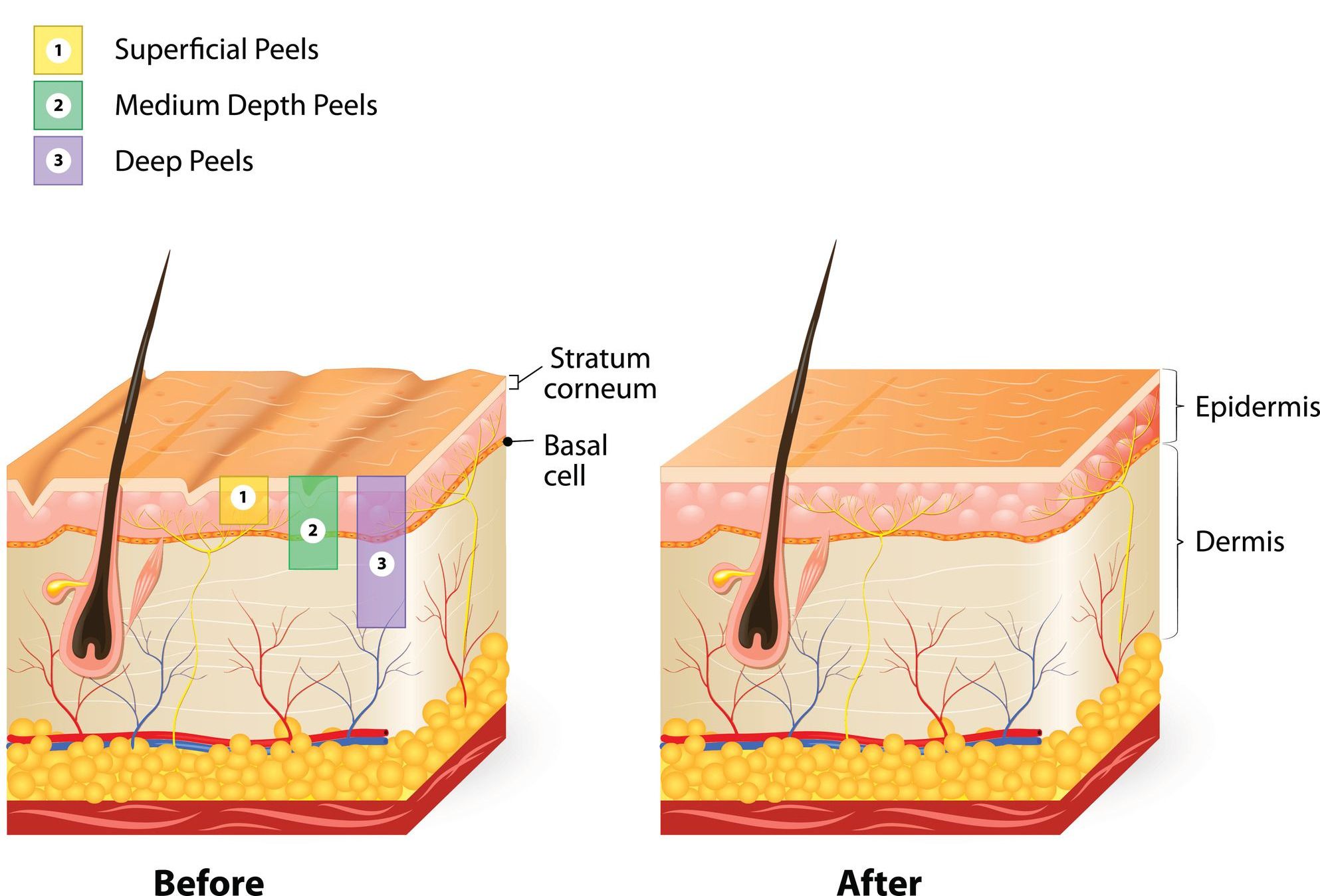
Depending on what your skin needs, there are different types. Light peels are good for younger skin to help with texture and tone. Medium ones go deeper, targeting scars and wrinkles. And for more mature skin with deeper lines or sun spots, a deep peel could be just what you need.
Superficial Chemical Peels
If your skin's looking a bit tired and thirsty, superficial peels can give it a quick boost. They hydrate, smooth, and help with minor skin issues like discoloration, wrinkles, and acne. Many dermatologists call it 'weekend peels' because recovery is super fast.
The most common superficial peels include 10-30% salicylic acid, 10-30% lactic acid, 30-50% glycolic acid, 40% mandelic acid, and 50% pyruvic acid. They all have slightly different effects and should be used depending on your skin type and concern.
If you have sensitive skin, you may try mandelic acid because it is the mildest peel. Glycolic acid suits those who experience dryness and flakiness. People with acne prefer pyruvic acid because it regulates sebum production and provides a keratolytic effect.
The light peel just works on the top layer of your skin because it's not too strong. The skin expert puts it on your clean skin for a short time, like 2 to 10 minutes, and then uses a neutralizing agent to stop the action. It's pretty easy on your skin, but you've still got to be careful after. Don't wear makeup or wash your face for the first day.
Typically, this treatment can be safely performed every 4 to 6 weeks. However, the exact frequency can vary depending on your individual skin type, the specific peel used, and your skin's response to the treatment.
Can I Do Superficial Chemical Peels at Home?
Yes, you can do superficial chemical peels at home, but there are important considerations to keep in mind:
- Choose the right product: Look for at-home peel products with ingredients like glycolic acid, lactic acid, or salicylic acid.
- Opt for lower-strength peels: If you're new to chemical peels, start with a lower concentration to see how your skin reacts.
- Do a patch test: Before applying the peel to your face, do a patch test on your inner forearm to ensure you don't have an allergic reaction.
Our team collects the most effective over-the-counter peels you can safely use:
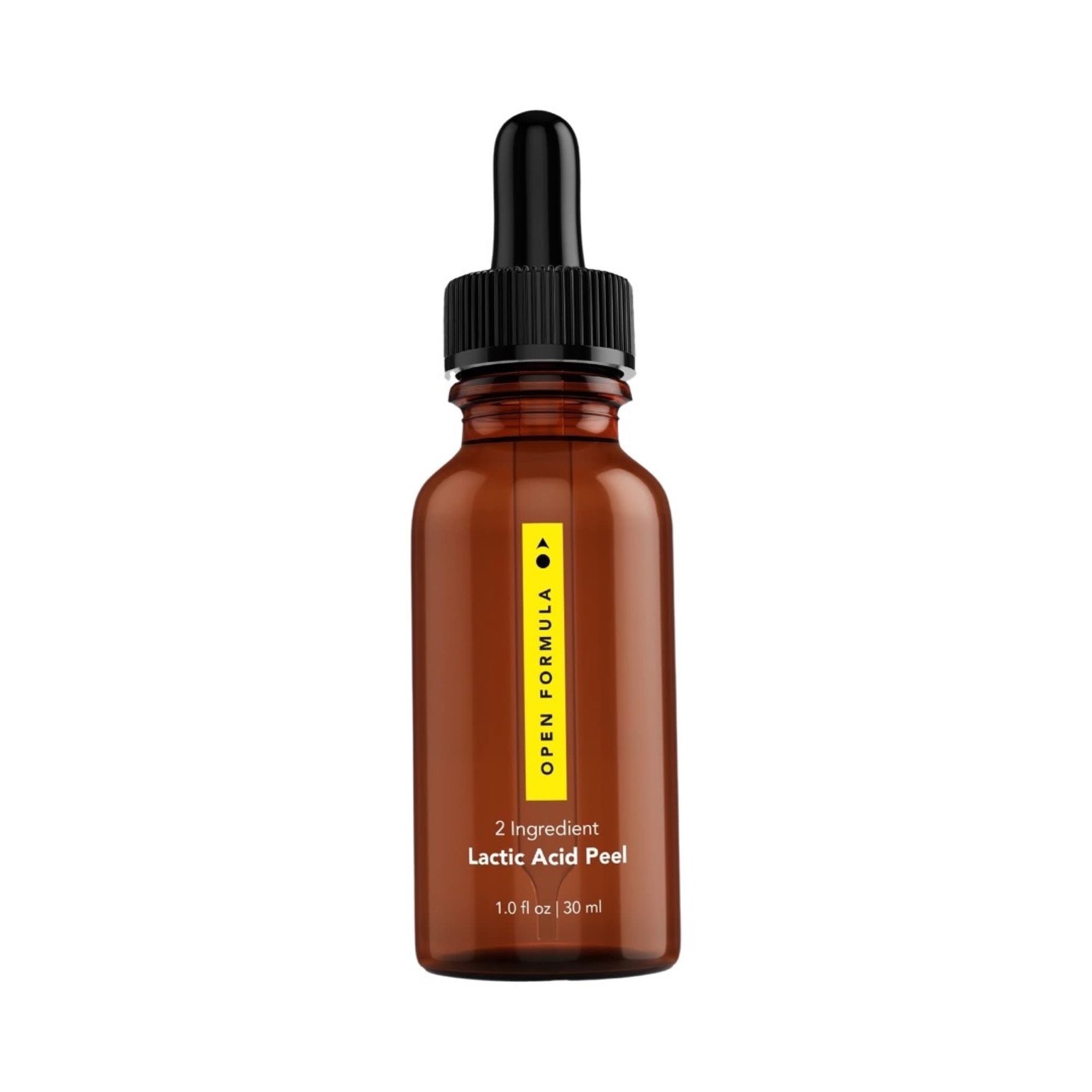
If you're thinking about trying out peels in your skincare routine, start with a 10% lactic acid. It's gentle and helps get rid of dead skin cells, smooths out lines, and lightens dark spots. This product works for all skin types and gives you that spa-like feel right at home.
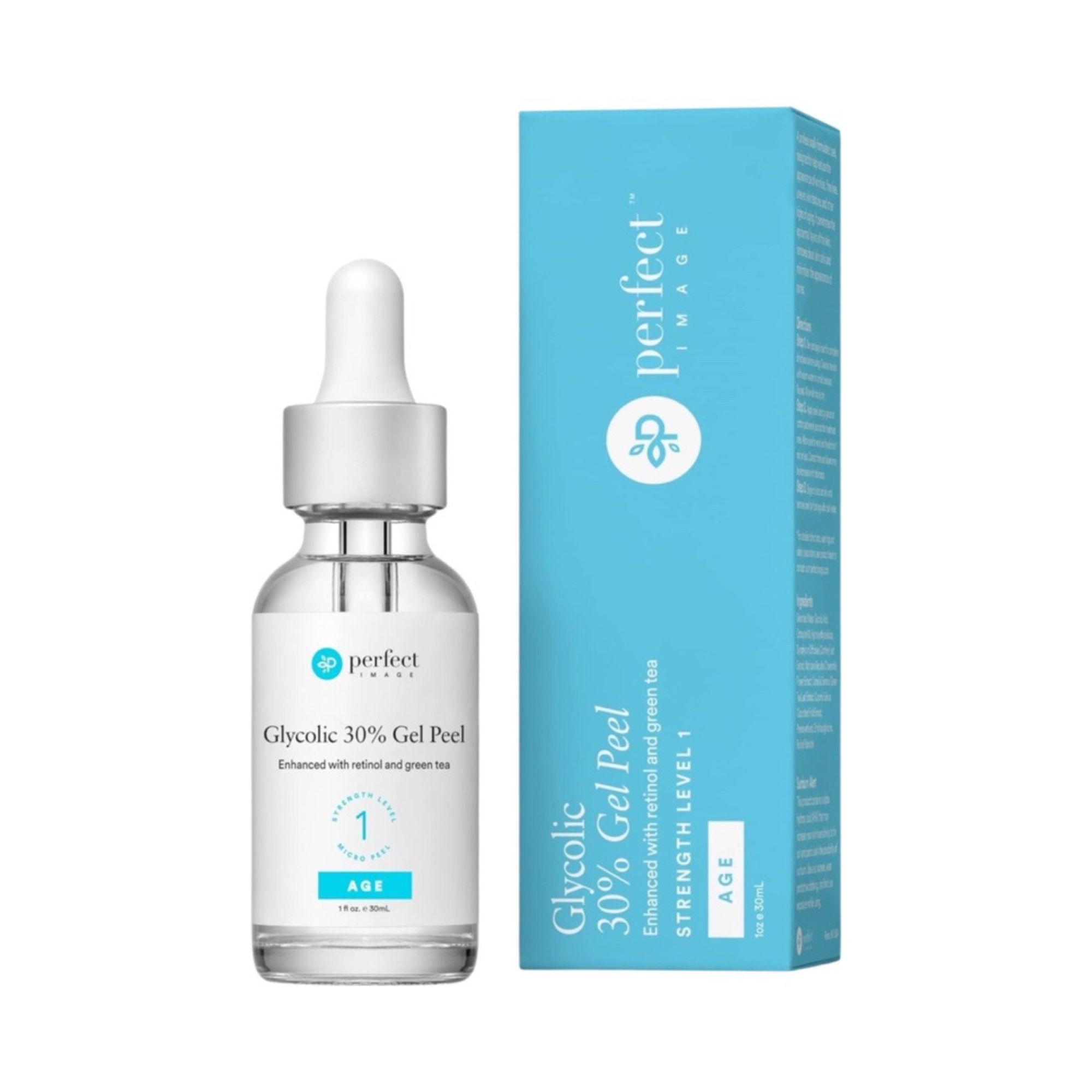
30% glycolic acid hydrates, improves skin tone, and reduces the appearance of wrinkles. The formula is also enhanced by retinol and green tea to fight acne and stubborn imperfections.
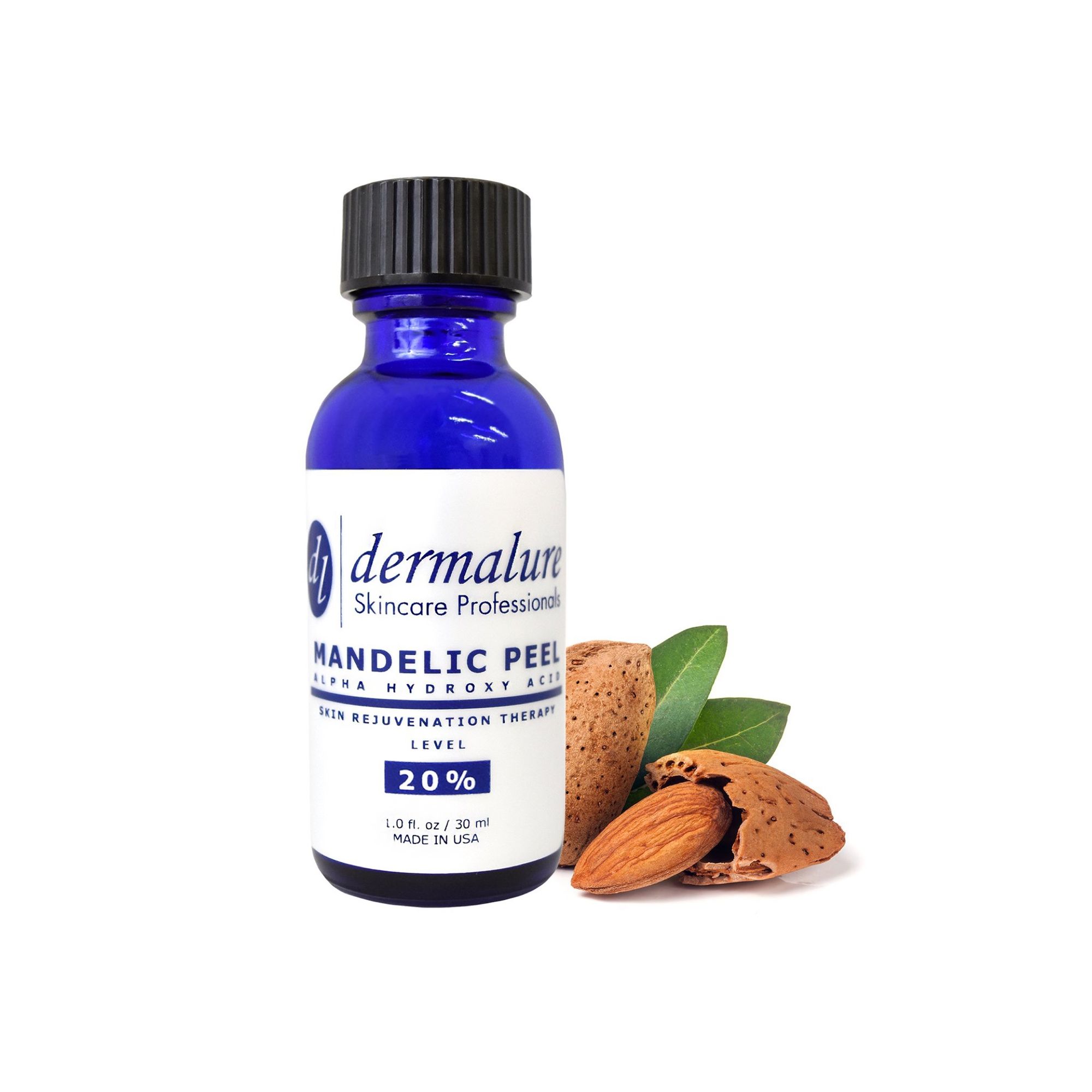
This peel has 20% mandelic acid, which comes from bitter almonds. It does everything from scrubbing off dead skin to boosting hydration and firmness. It's a great choice if your skin is sensitive, as mandelic acid is the gentlest of all the AHAs.
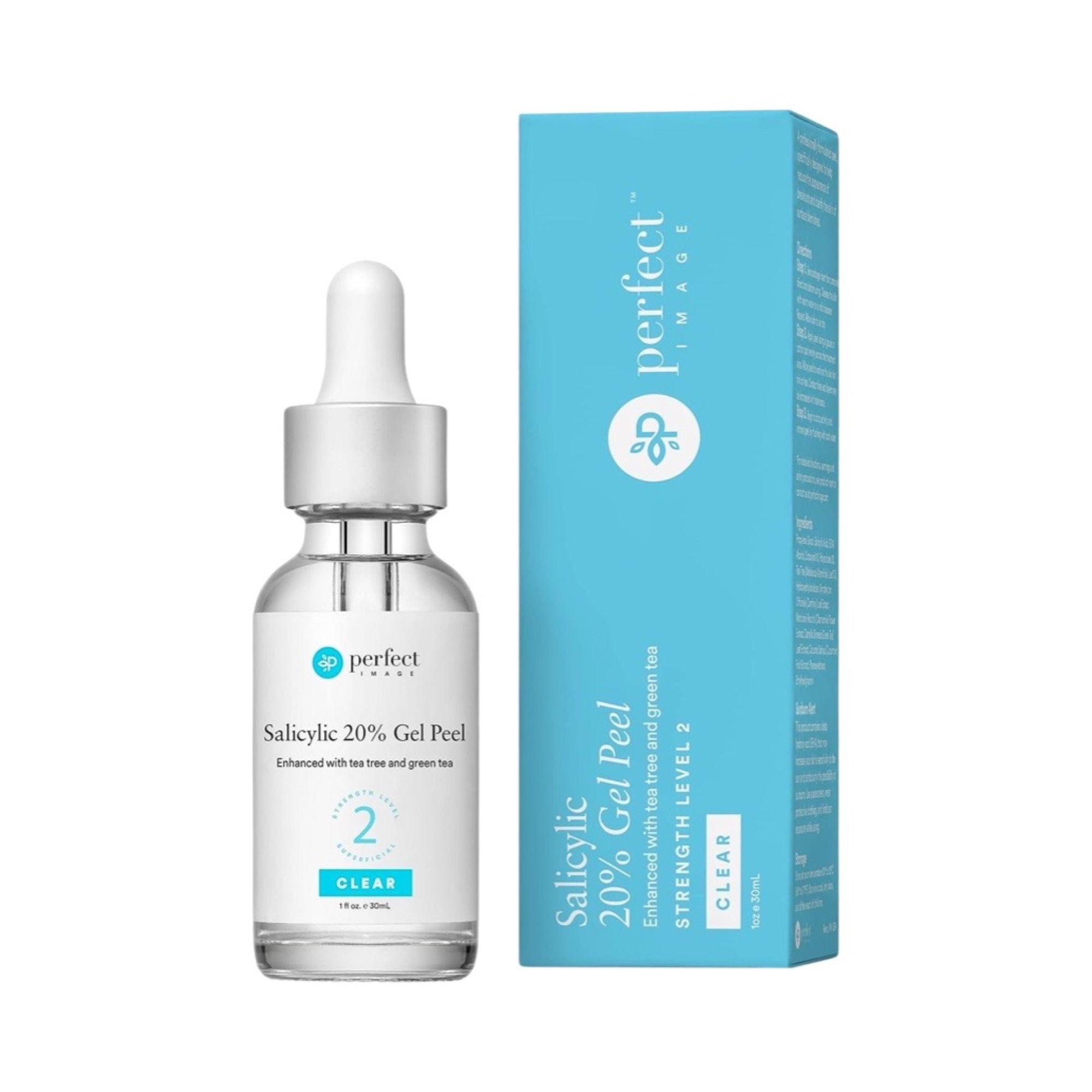
Do you struggle with acne and blemishes? Try this peel! 20% salicylic acid helps you flush excess sebum, unclog pores, and weaken acne bacteria.
Medium Chemical Peels
Are you in your mid-30s, noticing the first aging signs, or struggling with lasting pigmentation or acne? You might want to join the medium chemical peel crowd. These peels are stronger than the light ones and can make a big difference. They work on the entire epidermis and are similar to getting a second-degree burn. For your safety, you should undergo this procedure only in a medical setting.
After your skin check-up, your dermatologist might suggest using a small amount of tretinoin (like 0.025–0.05%) for a couple of weeks before your treatment. This is a good move because retinoids help your skin heal better and faster. And if you've got a darker skin tone, your doc might recommend using a small amount of Hydroquinone (around 2-4%) to keep your skin from getting darker when you're getting treated.
The most common medium peels involve 35 to 50% TCA alone or mixed with 70% glycolic acid at 35%. The healthcare professional applies it and lets it sit until your skin starts to look frosty or ashy. Then, they'll neutralize it to balance your skin’s pH. After the peel, how you look after your skin really matters to make sure you get the best outcome. For more on this, have a read of "Chemical Peel Process Day by Day: Tips, Best Products & Aftercare."
Right after you leave the clinic, your skin might get red or brown, but that's totally normal and lasts about a week. During this time, skip the makeup and be extra careful when you wash your face. For more on how to do that, check out the article "How to Wash Your Face After a Chemical Peel?" Medium peels have long-lasting effects, so usually, you only need to do it once in a long while.
Deep Chemical Peels
Deep peel treatments give some amazing results, but they're pretty harsh and can sometimes cause problems. Honestly, they're not as popular as they used to be. Many clinics are switching to laser treatments since they're safer. However, deep peels have been around and working well for nearly 50 years, so they're still worth a mention.
This kind of treatment happens in a hospital, and you'll be under anesthesia. Beforehand, you'll get a full medical check-up to make sure you're okay for the procedure. Be sure to tell your medical team about any ongoing health issues, stuff you can't tolerate, or allergies. Your doctor will also explain the risks and how to care for your skin after the peel.
A really well-known deep peel is the Baker-Gordon phenol peel, and it comes in two types: occluded and unoccluded. For the occluded type, they cover the treated skin with a dressing to make the peel go deeper, which is good for deep wrinkles and heavy sun damage. The unoccluded type is a bit milder and doesn’t peel as much. This one doesn’t use a dressing; the doctor just uses more of the peel solution and cleans your skin extra.
After getting the peel done, plan to chill for about two weeks because your skin will need more care than usual. Your face will turn super red as it starts to peel. The whole healing process might take as long as six months. Follow your doctor’s aftercare instructions to the letter to prevent any infection and speed up the recovery process.

